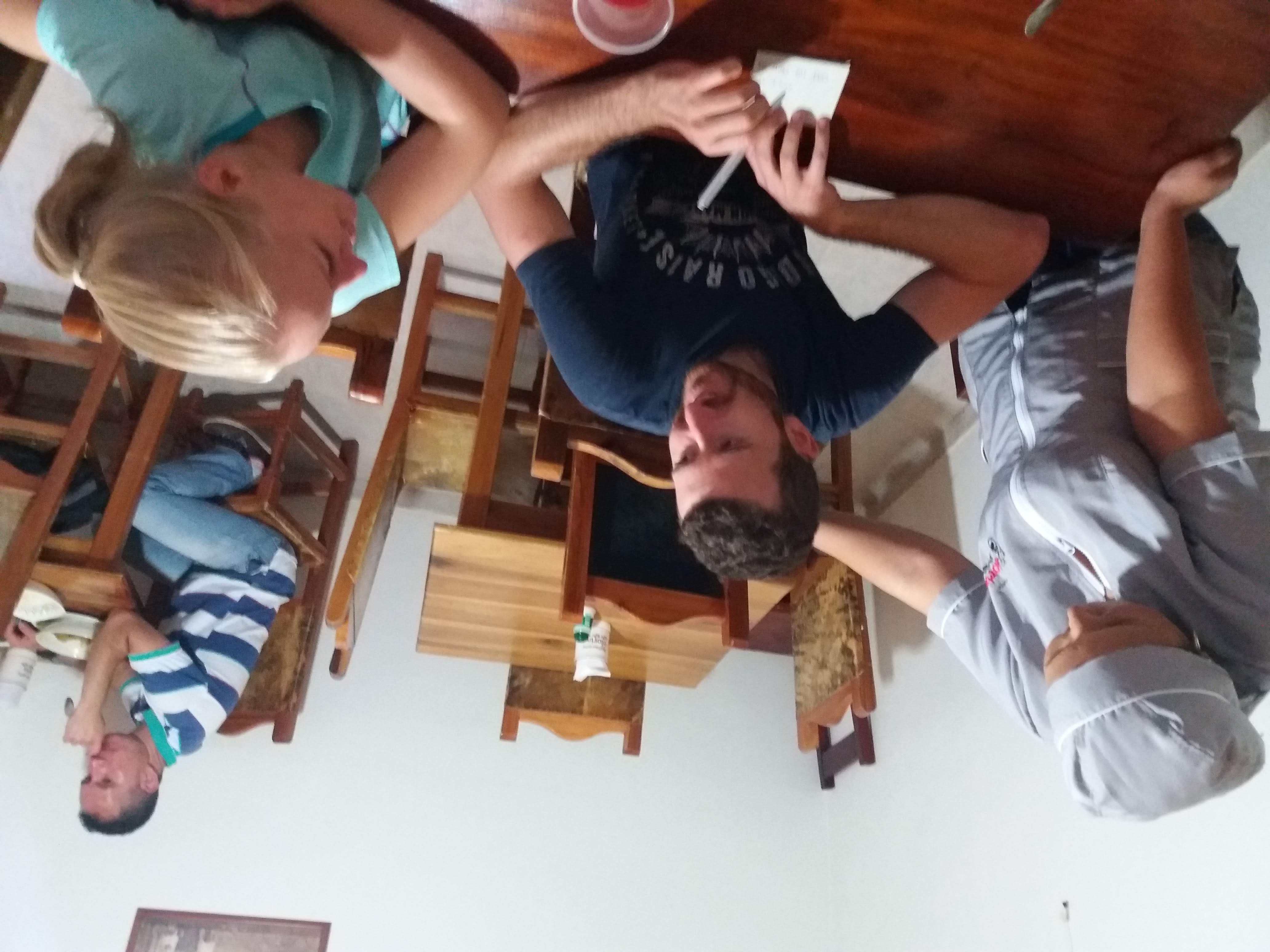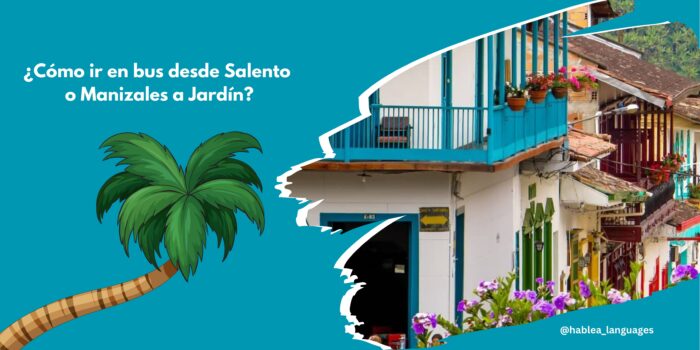Today we will talk about very useful vocabulary to order food in a restaurant in the region of Antioquia.
I have decided to do this first podcast about food and about how to order in restaurants because it’s one of the topics that generates the most difficulty in listening comprehension.
When we are in a restaurant, the waiter almost always speaks very fast because they are working, and they don’t have enough time to explain each dish.
But don’t worry, that’s what we’re here for, to help you to work on your oral production and listening comprehension. The next time you go to a restaurant you will feel like a Colombian.
The 12 most important verbs
We will start today with the first 12 important verbs to know when you go to the restaurant. You can listen to our podcast on the channel Viaje al español to listen the pronunciation.
-To have breakfast : Desayunar
-To have lunch: Almorzar
-To cook: Cocinar
-To have dinner : Cenar
-To go with : Acompañar
-To ask : Pedir
-To change for: Cambiar por
-To take away: Para llevar
-To want: Querer
-To understand: Comprender
-To repeat: Repetir
-To buy : Comprar
In Spanish, we use 3 different verbs for eating at different times of the day: first is “el desayuno” which is breakfast, “el almuerzo” which is lunch and “la cena”, which is (dinner). The verbs we use are the following: eat breakfast is desayunar, to have lunch is almorzar and to have dinner is cenar.
El desayuno colombiano: The colombian breakfast
Today, we will also learn the conjugation of verbo desayunar.
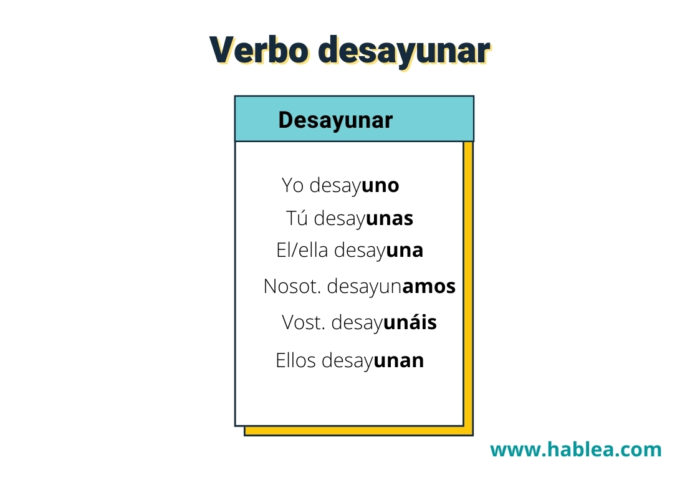
In Colombia, the foods for breakfasts are mainly salty. Unlike other countries, our breakfasts contain the following ingredients:
-Pan : bread
-Arepa
-Buñuelos : buñuelos are a fried dough ball filled with cheese
-Queso : cheese
-Huevos: Eggs
-Mantequilla : butter
– Leche : milk
-Chocolate caliente: hot chocolate for breakfast
-Empanadas: Is a type of baked or fried pastry with filling. The filling is usually carne (meat) or papas (potatoes). We love to add (spicy) ají sauce or guacamole…
-Café (un tinto)
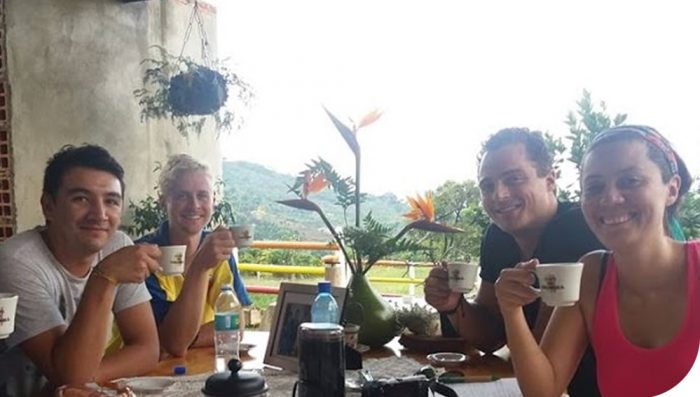
Colombians love to drink coffee (we are one of the best coffee producers in the word along with Brazil and Vietnam). As Colombians, we have about 5 coffees per day, we don’t drink the coffee so strong. A regular coffee is called a tinto. If you ask for a coffee “un café por favor” the seller won’t understand what type of coffee you want.
-Tamales : a corn dough or filling which is steam and wrapped in corn, plantain, or banana leaves. Inside the tamal, there is chicken or pork belly, pork ribs, carrots, peas, potatoes, and chickpeas.
-Agua de panela caliente is a sugar cane hot drink.
El almuerzo
In Colombia it is very common to go to small restaurants to enjoy the lunch of the day “menú del día”. A lunch of the day “menu del día” in Colombia is very complete and always contains:
-Sopa : soup
-Sopa de verduras : vegetable soup
-Frijoles o sopa de lentejas: red beans or lentils soup
I am from the city of Bogotá, in my city we prepare a very rich soup that I hope you will try one day, it is called Ajiaco. Ajiaco is a soup made of chicken, yellow corn, chicken, capers, creole potatoes, and cream. It is delicious!
With this dish you will have rice, banana and avocado next to it.
In Medellín, you will see that it is very common to be offered “Sancocho” as a soup. This soup is known for having fish, chicken, beef and some vegetables.
Rice always comes with Colombian lunches as well as potatoes (fried or cooked), yuca and plantain. The plantain can be fried which is then called “patacón”, It is one of my favorite dishes.
Today, we will also learn the conjugation of verbo almorzar
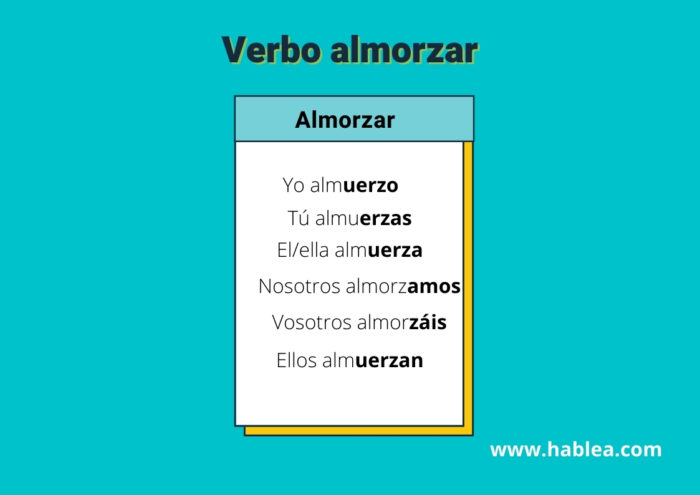
Dishes with meat
Now I’m going to talk to you about some dishes with meat. We always have on the menu:
-Carne de res : beef meat
-Carne de cerdo : pork meat
-Carne molida : Ground beef
-Pescado : fish
-Pollo frito o apanado : fried chicken, breaded chicken
-Chorizo
-Chicharrón : pork rind
Here is some vocabulary to explain how you want your meat cooked.
Frito : fried
Asado : roasted
Guisado : in tomato or onion sauce
A la plancha : grilled
Also, we have beans with our lunch, such as:
-El fríjol rojo : red beans
-La lenteja : lentils
-El garbanzo : chickpeas
-Las alvejas : green peas
-Las bebidas: the drinks
Drinks
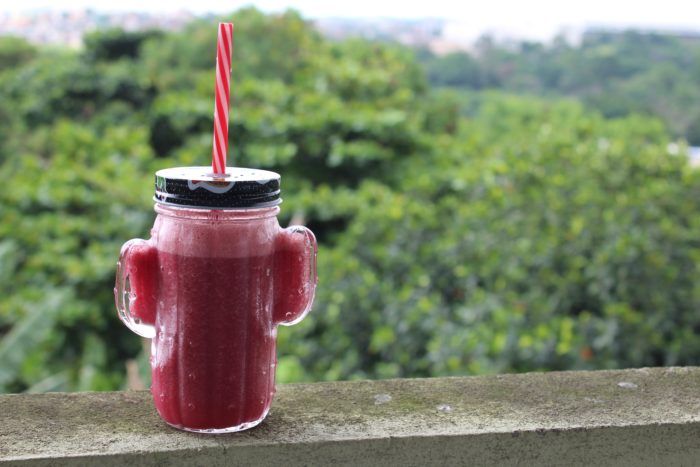
Colombia is a VERY privileged country because we have a lot of fruits, therefore, they will always offer you fresh fruit juice with your meal. On this podcast, we are not going to talk about Colombian fruits because there are too many. We will do a separate episode about fruits and vegetables. So now, we will talk about the drinks you can order in general restaurants.
In English, you will say: (blackberry juice, mango juice, guava juice, banana juice etc)
Jugo de …. ( jugo de mora, jugo de mango, jugo de guayaba, jugo de banano etc)
In Colombia, we drink juice with quite a lot of sugar, if you want to make sure that they don’t add so much sugar you can say : “sin azúcar por favor” (without sugar please).
In Colombia, it is not very common to drink water with your meal, but you can ask for tap water “agua de la llave”, if you like. “Me puedes dar agua de la llave, por favor”
You also find drinks like:
-La gaseosa: soda
-Agua con gas : sparkling water
-Agua sin gas : regular water
-El guandolo : sugar cane drink
–La mazamorra : a corn porridge drink that will often come with a piece of guava or sugar cane.
The desert: el postre
Dessert is not common in Colombia. Sometimes they offer you a small sweet but it is not something you will commonly have after dinner. We eat our dessert or sweets anytime of the day.
If you are a vegetarian
It is very important to know that Colombia is not a country that has a lot of vegetarian options. It is really something very new, our dishes are characterized by being greasy, with a lot of flour and meat. That is why I am going to give you some tips to order a vegetarian dish.
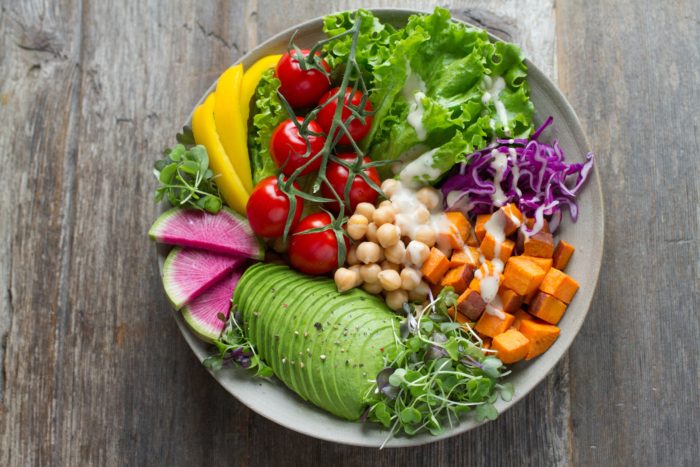
To order a vegetarian dish
When the waiter arrives at the table, you can ask him for a dish like this: ¿Qué tipo de comida vegetariana tienen?, What vegetarian options do you have?
If there are no vegetarian dishes on the menu, you can ask to change the meat for more vegetables or eggs. You can use the following phrases:
-¿Puedo cambiar la carne por huevo? Can I change the meat for egg?
–¿Puedo cambiar la carne por arroz o más papas? Can I change the meat for more rice or more potatoes?
-No quiero carne, quiero una ensalada, por favor. I don’t want to eat meat, I want more salad, please.
Vegetarian dishes are generally cheaper. That is a great advantage for you.
Finally, in Colombia it is common for the dishes to be very large. Therefore, we have no problem ordering food and having some to take away. You can say: ¿Puedo llevar esto por favor? Can I pack this to go, please?
Ask for a delivery : Pedir un domicilio
In Colombia, it is very common to ask for a delivery “un domicilio”. You ask for delivery by calling, messaging on whatsapp or using one of the apps like Rappi- If you have to make a call or send a message to ask for a delivery: Here are the sentences:
-Hola, quiero pedir un domicilio por favor. Hello, I want to ask for a delivery, please
–Hola, Quiero pedir un pollo frito y una gaseosa, por favor. I want to ask for fried chicken and a soda.
It is very important to make sure you are very detailed about your address.
You can tell them your address like this:
La dirección de mi casa, de mi apartamento es: My house, my apartment address is:
Asking about how long the delivery will take:
-¿Cuánto tiempo demora el domicilio? How long will it take the delivery to arrive?
They might ask you how you want to pay, in cash “en efectivo” or by credit car “con tarjeta de crédito”.
That’s all for today. I would love to know if this article helped you and any questions you have about ordering meals in a restaurant. I will be happy to answer your questions.
Written by: Alejandra Cuarán Zamora.

